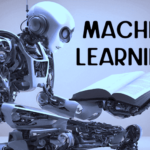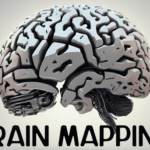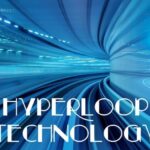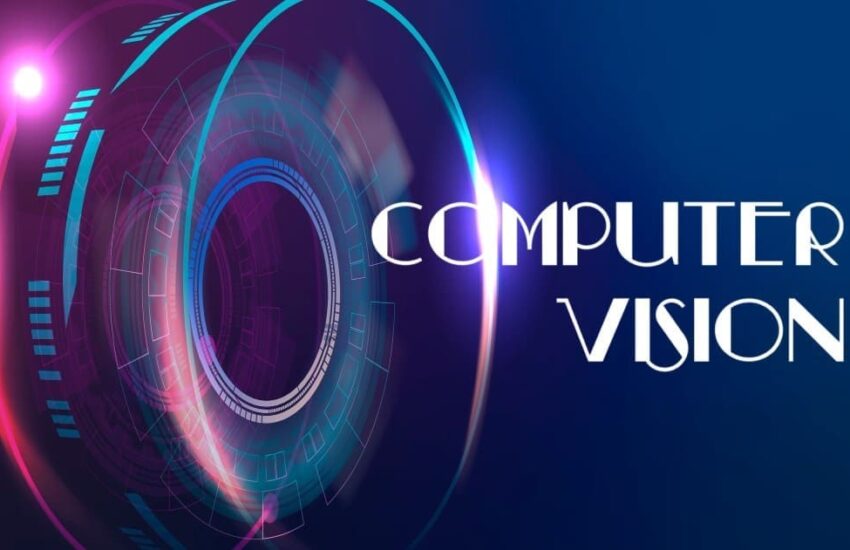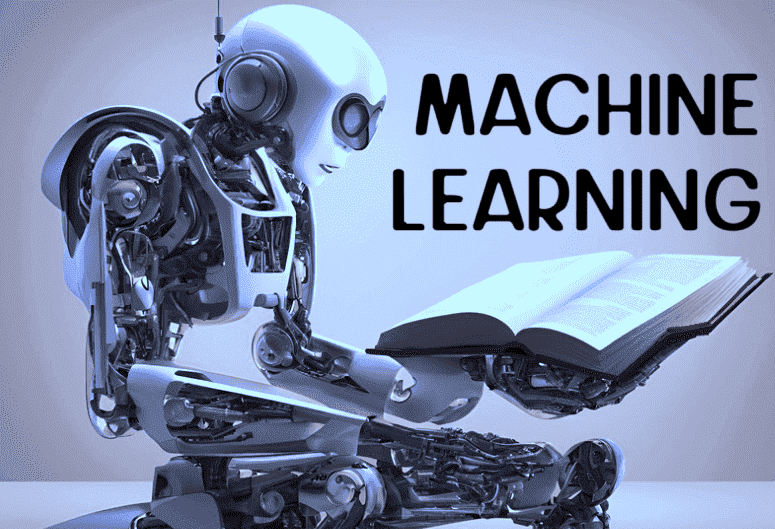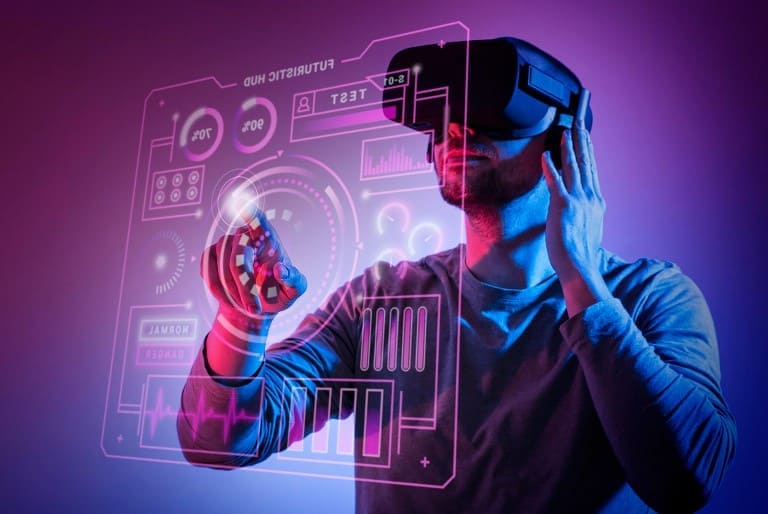
Overview:
To understand what is Spatial computing, we need to comprehend the forefront of a technological revolution that bridges the digital and physical worlds, creating a seamless, interactive experience for users. This innovative field encompasses augmented reality (AR), virtual reality (VR), and mixed reality (MR), allowing for real-time integration and interaction with digital content in the physical environment. By leveraging advanced sensors, powerful processors, and sophisticated algorithms, spatial computing is redefining how we perceive and engage with the world around us.
The concept of spatial computing extends beyond mere visualization; it involves a comprehensive understanding of the spatial context, enabling digital information to be mapped accurately onto physical spaces. This technology facilitates a range of applications, from immersive gaming experiences and interactive educational tools to advanced medical training and architectural design. As industries continue to explore the potential of spatial computing, its impact on various sectors is becoming increasingly significant.
Contents:
- What is Spatial Computing
- Examples for its better illustration
- key technologies enabling Spatial Computing
- Other Key Foundational Components of Spatial Computing
- Key Application Areas of Spatial Computing
- Key Benefits of Spatial Computing
- Key Challenges with Spatial Computing
- Future Outlook on Spatial Computing
- Summing Up
So, what is Spatial Computing:
Spatial computing is a way of using technology to blend the physical and digital worlds, making it possible for computers to understand and interact with the physical space around us.
Imagine you’re wearing special glasses that show you information about the world in front of you. These glasses might highlight the name of a building, show directions to a restaurant, or even display a digital character walking alongside you. This is an example of spatial computing in action.
Here are some more examples for its better illustration:
1. Augmented Reality (AR) Games:
- Pokemon GO: This popular game uses your phone’s camera to show Pokémon as if they are in the real world. You can see and catch them on your screen as you move around in real life.
2. Navigation and Maps:
- Google Maps Live View: When you’re walking in a new city, you can use your phone’s camera to see arrows and directions overlaid on the real world, helping you find your way more easily.
3. Interior Design and Furniture:
- IKEA Place App: This app allows you to use your phone to place virtual furniture in your actual room. You can see how a new sofa or table would look and fit before you buy it.
4. Virtual Reality (VR) Training:
- Flight Simulators: Pilots use VR systems to practice flying. These simulators recreate the experience of being in a cockpit, allowing pilots to train in a safe, controlled environment.
5. Healthcare:
- Surgical Training: Doctors can use VR to practice surgeries. They can see a 3D model of a human body and use tools to simulate operations, improving their skills without any risk to real patients.
6. Education:
- Interactive Learning: Students can use AR apps to see 3D models of the solar system or historical events. This makes learning more engaging and interactive.
Now, let’s look at the key technologies enabling Spatial Computing:
1. Augmented Reality (AR):
- AR Hardware: Devices like Microsoft HoloLens, Magic Leap, and AR-enabled smartphones and tablets.
- AR Software: SDKs and platforms such as ARKit (Apple), ARCore (Google), and Unity.
2. Virtual Reality (VR):
- VR Hardware: Headsets like Oculus Rift, HTC Vive, PlayStation VR, and Valve Index.
- VR Software: Development platforms like Unity, Unreal Engine, and specialized SDKs.
3. Mixed Reality (MR):
- Combines elements of both AR and VR, allowing for interaction with both digital and physical elements.
- MR Devices: Microsoft HoloLens, Magic Leap.
4. Geospatial Technologies:
- GPS: Global Positioning System for location tracking.
- GIS: Geographic Information Systems for mapping and spatial analysis.
- LIDAR: Light Detection and Ranging for 3D mapping and object detection.
5. Computer Vision:
- Technologies that enable machines to interpret and understand visual information from the world.
- Techniques include image recognition, object detection, and depth sensing.
6. Sensor Technologies:
- IMUs: Inertial Measurement Units that track orientation and movement.
- Cameras: RGB, depth, and 360-degree cameras for capturing visual information.
- Haptic Sensors: For touch and force feedback.
7. Spatial Audio:
- Technologies that create 3D soundscapes for more immersive experiences.
- Devices and software that support spatial audio include binaural recording, Dolby Atmos, and specialized audio engines.
8. Artificial Intelligence (AI) and Machine Learning (ML):
- For processing and interpreting spatial data.
- Applications include object recognition, scene understanding, and user interaction prediction.
9. Networking and Connectivity:
- 5G: High-speed, low-latency wireless communication to support real-time spatial applications.
- Edge Computing: Processing data closer to the source to reduce latency and bandwidth use.
10. Human-Computer Interaction (HCI):
- Gestural Interfaces: Use of hand and body movements to control and interact with spatial systems.
- Voice Interfaces: Natural language processing for voice commands and interaction.
11. Wearable Technologies:
- Smart glasses, haptic gloves, and other wearable devices that enhance spatial computing experiences.
12. Cloud Computing:
- Provides the necessary computational power and storage for processing large amounts of spatial data.
- Services like AWS, Google Cloud, and Microsoft Azure.
13. IoT (Internet of Things):
- Connected Devices: Integration with IoT devices for enhanced environmental interaction (e.g., smart home devices, sensors).
- IoT Data: Utilizing data from IoT devices to inform and enhance spatial computing applications.
14. Blockchain and Distributed Ledger Technologies:
- For secure, decentralized data management and verification, especially in spatial applications involving multiple stakeholders.
Other Key Foundational Components of Spatial Computing:
1. Spatial Mapping and Localization:
- Simultaneous Localization and Mapping (SLAM): Techniques that enable devices to create maps of an environment while simultaneously keeping track of their location within it.
- Environmental Understanding: Recognizing and categorizing objects and surfaces within a space.
2. Spatial Data Management:
- Data Storage and Retrieval: Efficient systems to store and access large amounts of spatial data.
- Spatial Databases: Specialized databases designed to manage spatial data (e.g., PostGIS, Oracle Spatial).
3. Spatial User Interfaces (SUIs):
- 3D User Interfaces: Interfaces that allow users to interact with three-dimensional virtual environments.
- Natural User Interfaces (NUIs): Interfaces that leverage natural human actions, such as gestures, voice, and gaze.
4. Interaction Techniques:
- Hand Tracking and Gesture Recognition: Allowing users to control and manipulate digital elements using hand movements.
- Eye Tracking: Enabling gaze-based interactions and enhancing the sense of presence in virtual environments.
- Voice Commands: Using speech recognition to interact with spatial systems.
5. Spatial Anchors:
- Persistent Anchors: Digital markers that remain fixed in the physical world, allowing for consistent placement of digital content.
- Cloud Anchors: Anchors that are shared across multiple devices and users through cloud services.
6. Content Creation Tools:
- 3D Modeling Software: Tools for creating detailed 3D models and environments (e.g., Blender, Maya, SketchUp).
- AR/VR Development Platforms: Software development kits (SDKs) and platforms for building AR and VR applications (e.g., Unity, Unreal Engine).
7. Context Awareness:
- Contextual Computing: Systems that adapt to the user’s context, including location, time, activity, and preferences.
- Environmental Context: Understanding the physical environment to enhance interactions (e.g., recognizing furniture layout for AR applications).
8. Collaboration and Multi-User Experiences:
- Synchronized Environments: Systems that allow multiple users to share and interact within the same virtual or augmented space.
- Real-Time Collaboration: Tools that enable users to work together in spatial applications, such as virtual meetings or collaborative design.
9. Security and Privacy:
- Data Encryption: Ensuring that spatial data is securely transmitted and stored.
- User Privacy: Protecting user data and ensuring that personal information is not misused.
10. Performance Optimization:
- Real-Time Rendering: Techniques to ensure smooth and responsive visual experiences.
- Latency Reduction: Minimizing delays in data processing and interaction to enhance user experience.
11. Cross-Platform Compatibility:
- Interoperability: Ensuring spatial computing applications work across different devices and platforms.
- Standardization: Developing and adhering to standards for spatial data formats, communication protocols, and user interfaces.
Key Application Areas of Spatial Computing:
1. Healthcare:
Medical Imaging and Diagnostics:
- Enhanced visualization of CT scans, MRI, and X-rays in 3D.
- Integration of spatial data with patient records for comprehensive diagnostics.
Surgical Planning and Navigation:
- Use of 3D models for pre-operative planning.
- Intra-operative AR for guiding surgeons during complex procedures.
Therapy and Rehabilitation:
- VR environments for physical therapy exercises.
- AR applications for cognitive and mental health therapies.
2. Education and Training
Immersive Learning:
- Interactive AR and VR lessons in subjects like history, science, and geography.
- Virtual classrooms and laboratories for remote learning.
Professional Training:
- Simulations for medical procedures, military tactics, and emergency response.
- VR training modules for skills development in various industries.
3. Urban Planning and Smart Cities
City Planning and Development:
- 3D city models for planning new developments and infrastructure.
- Simulation of urban scenarios to assess impact on traffic, environment, and resources.
Public Safety:
- Real-time spatial data integration for monitoring crime and emergency situations.
- AR systems for guiding first responders in emergencies.
Traffic Management:
- Optimization of traffic lights and flow using spatial data.
- Real-time traffic monitoring and prediction to reduce congestion.
4. Geospatial Analysis and Environmental Monitoring
Mapping and GIS:
- High-resolution maps and spatial analysis for disaster management.
- Environmental impact assessments and land use planning.
Climate Change Monitoring:
- Tracking changes in vegetation, ice caps, and water bodies using satellite data.
- Predictive modeling of climate patterns and natural disasters.
5. Retail and E-commerce
In-Store Navigation:
- AR applications to help customers find products in large retail spaces.
- Personalized shopping experiences through spatial data.
Virtual Try-Ons:
- AR technology for customers to try on clothes, glasses, and makeup virtually.
- Enhanced fitting room experiences with virtual mirrors.
Enhanced Shopping Experience:
- Interactive product displays and information through AR.
- Virtual store layouts and product placements.
6. Manufacturing and Industry 4.0
Digital Twins:
- Creating virtual models of manufacturing plants and equipment.
- Monitoring and optimizing operations in real-time.
Augmented Maintenance:
- AR guides and instructions for equipment repair and maintenance.
- Training workers using virtual simulations of machinery and processes.
Process Optimization:
- Spatial analysis to streamline manufacturing processes.
- Logistics and supply chain optimization using spatial data.
7. Real Estate and Architecture
Virtual Property Tours:
- Remote viewing of properties through VR tours.
- Enhanced property listings with 3D walkthroughs.
Architectural Visualization:
- AR and VR tools for visualizing architectural designs and modifications.
- Real-time collaboration on design changes using 3D models.
Construction Management:
- Monitoring construction progress with drones and spatial data.
- AR applications for site management and worker safety.
8. Gaming and Entertainment
Immersive Gaming:
- AR and VR games that offer interactive and immersive experiences.
- Spatial computing for creating realistic game environments.
Interactive Media:
- Augmented reality experiences in movies and concerts.
- VR storytelling for immersive narrative experiences.
9. Automotive and Transportation
Navigation and Guidance:
- AR-enhanced navigation systems for better route visualization.
- Real-time traffic and hazard updates integrated with navigation.
Driver Assistance:
- AR heads-up displays showing important information like speed and directions.
- Safety features like lane departure warnings and pedestrian detection.
Vehicle Design and Testing:
- Virtual simulations for designing and testing new vehicle models.
- Crash testing and safety assessments using spatial computing.
10. Tourism and Hospitality
Interactive Tours:
- AR applications providing historical and contextual information at tourist sites.
- Virtual guides and interactive maps for museums and attractions.
Virtual Travel:
- VR experiences offering virtual tours of travel destinations.
- Pre-trip virtual exploration to help travelers plan their trips.
Enhanced Guest Experience:
- AR applications in hotels for room navigation and service information.
- Interactive room controls and personalized guest services.
11. Agriculture
Precision Farming:
- Spatial data for optimizing planting patterns and irrigation schedules.
- Monitoring soil health and crop conditions using drones and sensors.
Crop Monitoring:
- Real-time monitoring of crop health and growth stages.
- Predictive analytics for yield forecasting and pest management.
Key Benefits of Spatial Computing:
1. Enhanced User Experience
- Immersive Interaction: Spatial computing enables more natural and intuitive interactions with digital content, enhancing user engagement through immersive environments.
- Augmented Reality (AR) and Virtual Reality (VR): Users can experience augmented or virtual environments that provide richer and more engaging experiences compared to traditional interfaces.
2. Improved Productivity
- Enhanced Collaboration: Tools like AR and VR can facilitate better remote collaboration by allowing participants to interact with 3D models and environments as if they were physically present.
- Optimized Workflows: In industries such as manufacturing and healthcare, spatial computing can streamline complex tasks, reduce errors, and enhance precision through real-time data visualization and spatial guidance.
3. Data Visualization and Analysis
- Enhanced Visualization: Spatial computing allows for better visualization of complex data sets, making it easier to identify patterns and insights through 3D representations.
- Contextual Information: Users can access contextual information overlaid onto the real world, which can be particularly useful in fields like architecture, urban planning, and navigation.
4. Real-World Integration
- Smart Cities: Enables the development of smarter cities through better infrastructure management, real-time monitoring, and enhanced public services.
- Retail and Marketing: AR can enhance the shopping experience by allowing customers to visualize products in their own space before purchasing.
5. Accessibility and Inclusivity
- Assistive Technologies: Spatial computing can create new ways for people with disabilities to interact with their environment and access information.
- Personalized Experiences: Can provide personalized and adaptive experiences based on user preferences and behaviors.
6. Economic Opportunities
- New Markets and Industries: The growth of spatial computing is creating new markets and opportunities for businesses, driving innovation and economic growth.
- Job Creation: As spatial computing technologies develop, new roles and expertise areas are emerging, contributing to job creation.
7. Environmental Sustainability
- Reduced Need for Physical Prototypes: In fields like architecture and engineering, digital models can reduce the need for physical prototypes, saving materials and reducing waste.
- Efficient Resource Management: Spatial computing can help in monitoring and managing resources more efficiently, contributing to sustainable practices.
Key Challenges with Spatial Computing:
1. Technical and Hardware Limitations
- Performance and Latency: Ensuring low latency and high performance is critical for a seamless user experience, especially in VR and AR. High latency can cause motion sickness and break immersion.
- Battery Life: Portable and wearable devices often struggle with battery life, limiting their usability for extended periods.
- Processing Power: Real-time processing of spatial data requires significant computational power, which can be a bottleneck in mobile and lightweight devices.
- Display Technology: Achieving high-resolution, lightweight, and affordable displays that can handle the demands of spatial computing is challenging.
2. Spatial Mapping and Environment Understanding
- Accuracy: Accurate mapping of the physical environment is essential for effective spatial computing applications. Small errors can lead to a poor user experience.
- Dynamic Environments: Environments can change dynamically, requiring the system to continuously update its understanding in real-time.
3. User Interface and Experience
- Intuitive Interactions: Designing intuitive and natural user interfaces for interacting with 3D spatial environments is complex.
- User Comfort: Ensuring user comfort over long periods is a challenge, especially in VR where users can experience motion sickness or eye strain.
4. Content Creation and Ecosystem
- Content Availability: Creating high-quality spatial content is time-consuming and expensive. There is a need for more accessible tools and platforms for content creation.
- Interoperability: Ensuring that different devices and platforms can work together seamlessly is critical for a cohesive user experience.
5. Data Privacy and Security
- Privacy Concerns: Spatial computing devices often require extensive data collection about users’ environments and behaviors, raising privacy concerns.
- Security Risks: Protecting this data from breaches and unauthorized access is essential to maintain user trust.
6. Social and Ethical Implications
- Social Acceptance: Broad adoption of spatial computing technologies depends on social acceptance and overcoming skepticism.
- Ethical Use: Ensuring ethical use of spatial computing technologies, particularly in surveillance and data collection, is important.
7. Cost and Accessibility
- Affordability: High costs of hardware and content development can be barriers to widespread adoption.
- Accessibility: Making spatial computing technologies accessible to people with disabilities is an ongoing challenge.
8. Standardization
- Lack of Standards: The industry lacks standardization in hardware, software, and data formats, which can hinder compatibility and user experience.
Future Outlook on Spatial Computing:
1. Ubiquitous Augmented Reality (AR) Interfaces
- Seamless Integration: AR will become a seamless part of daily life, with smart contact lenses or implants that overlay digital information directly onto our field of vision. This could render physical screens obsolete as any surface can become a display.
- Personalized Environments: Individuals will customize their visual environments to suit their preferences, with dynamic, context-sensitive information appearing as needed, whether at home, work, or in public spaces.
2. Immersive Virtual Worlds
- Metaverse Evolution: The concept of the metaverse will evolve into a fully immersive, persistent virtual universe where people live, work, and socialize. These worlds will be indistinguishable from reality, with hyper-realistic graphics and AI-driven characters that interact in complex, lifelike ways.
- Digital Twin Cities: Entire cities will have digital twins in the virtual realm, allowing residents to explore, plan, and interact with urban spaces in a highly detailed and interactive manner before making real-world changes.
3. Advanced Human-Machine Interaction
- Brain-Computer Interfaces (BCIs): BCIs will enable direct communication between our brains and digital devices, allowing users to control and interact with virtual environments and physical devices through thought alone.
- Haptic and Sensory Feedback: Advances in haptic technology will allow users to feel textures and resistance in virtual environments, creating a sense of physical presence. Additionally, olfactory and gustatory feedback systems might be developed to simulate smells and tastes.
4. Autonomous Spatial Computing Systems
- Self-Organizing Networks: Intelligent, self-organizing networks of spatial computing devices will manage urban infrastructure autonomously, optimizing traffic flow, energy use, and public services without human intervention.
- Autonomous Robotics: Swarms of autonomous drones and robots, guided by spatial computing, will perform complex tasks such as construction, maintenance, and emergency response, collaborating in real-time with high precision.
5. Hyper-Personalized Experiences
- Context-Aware Environments: Environments will adapt in real-time to individual users’ needs and preferences, providing personalized lighting, temperature, and acoustic settings in public and private spaces.
- Dynamic Learning Systems: Education will transform with AI-driven, spatially aware tutors that adapt lessons to each student’s learning style and pace, providing interactive and immersive learning experiences.
6. Interplanetary Spatial Computing
- Space Colonization Support: Spatial computing will play a critical role in the colonization of other planets, providing real-time simulation and management of habitats, resources, and exploration activities.
- Interstellar Collaboration: Virtual environments will enable real-time collaboration between Earth and off-world colonies, facilitating communication and cooperation across vast distances.
7. Enhanced Biological and Digital Integration
- Bio-Integrated Devices: Wearable and implantable devices will interface with biological systems, enhancing human capabilities and health monitoring. These devices will provide real-time health analytics, diagnostics, and even corrective measures.
- Digital Immortality: Advances in AI and spatial computing could lead to the creation of digital avatars that replicate an individual’s personality, memories, and behaviors, potentially offering a form of digital immortality.
8. Ethical and Societal Transformations
- New Forms of Governance: The pervasive influence of spatial computing will necessitate new forms of governance and societal norms to address issues of privacy, security, and ethical use of technology.
- Redefinition of Reality: The distinction between physical and digital realities will blur, leading to new cultural and philosophical understandings of existence, identity, and consciousness.
Summing Up:
Spatial computing stands at the forefront of digital innovation, seamlessly merging virtual and physical realities through technologies like AR, VR, and MR. Its applications span across diverse sectors including entertainment, education, healthcare, and design, revolutionizing how we interact with information and environments. Despite challenges such as technological limitations and user acceptance, ongoing advancements in hardware capabilities and software algorithms continue to propel spatial computing forward.
Looking forward, the future of spatial computing holds immense promise. As industries increasingly harness its capabilities for training simulations, immersive gaming experiences, and real-time data visualization, the technology is set to redefine workplace productivity, customer engagement, and societal interaction. Embracing these innovations will not only drive economic growth but also foster a more connected and interactive world where digital and physical boundaries blur, enhancing human experiences in unprecedented ways.





